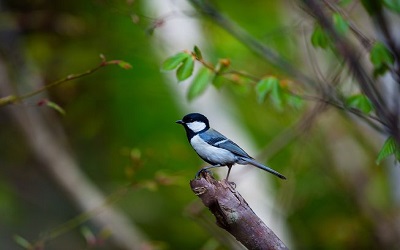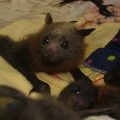PTE考生目前最大的问题之一就是练习题缺乏。除了有限的基本官方书(PLUS,Testbuilder, OG)之外,就没有题了。很多英语基础不是很扎实的同学很难找到练习材料。墨尔本文波雅思PTE培训学校专门为墨尔本,悉尼PTE考生准备了适合PTE听力阅读练习的科学60秒。各位PTE同学可以练习PTE听力中的summarise spoken text和PTE口语中的retell lecture,PTE听力口语-科学60秒-Frosty Moss练习记笔记技巧和复述。废话少说,下面开始:
听力内容:
60秒科学节目(SSS)是科学美国人网站的一套广播栏目,英文名称:Scientific American – 60 Second Science,节目内容以科学报道为主,节目仅一分钟的时间,主要对当今的科学技术新发展作以简明、通俗的介绍,对于科学的发展如何影响人们的生活环境、健康状况及科学技术,提供了大量简明易懂的阐释。
Humans have always considered themselves special compared with other animals.
One reason is the complexity of our language—bounded by unique rules, such as syntax,where we string words together in a specific order to create meaningful sentences.
But it turns out a bird may also vocalize with syntax rules—the Japanese great tit, a bird that’sa close relative of North America’s very own chickadee.
Toshitaka Suzuki, of Japan’s Graduate University for Advanced Studies, has been listening tothe calls of the Japanese great tit for the past decade.
Suzuki has recorded at least ten alarm calls used by the bird.
These include, known as the ABC call, which alerts other great tits to the presence of apredator, and the D call, which signals the birds to approach the caller.
Now Suzuki and his colleagues have found that the great tit uses those calls together to deliverboth messages to other birds.
And they found that the order of that call was essential—only ABC–D made sense to the birds.
When the scientists intentionally reversed the order to create a D–ABC call, the birds did notrespond.
The study is in the journal Nature Communications.
“I think the really interesting thing is why the order matters, and figuring that out I think will bedifficult but also potentially really, really interesting, because it’ll give a lot of insight…”
David Wheatcroft of Sweden’s Uppsala University, one of the study scientists.
“You wouldn’t expect sort of naively that it would matter.
Obviously it matters in human language, the order in which we say things, but it’s stillsomehow shocking when you find it in tits.
So I think understanding why it’s the case will be really interesting in the future.”
The work could help explain the evolution of the building blocks and structure of our ownlanguages.





